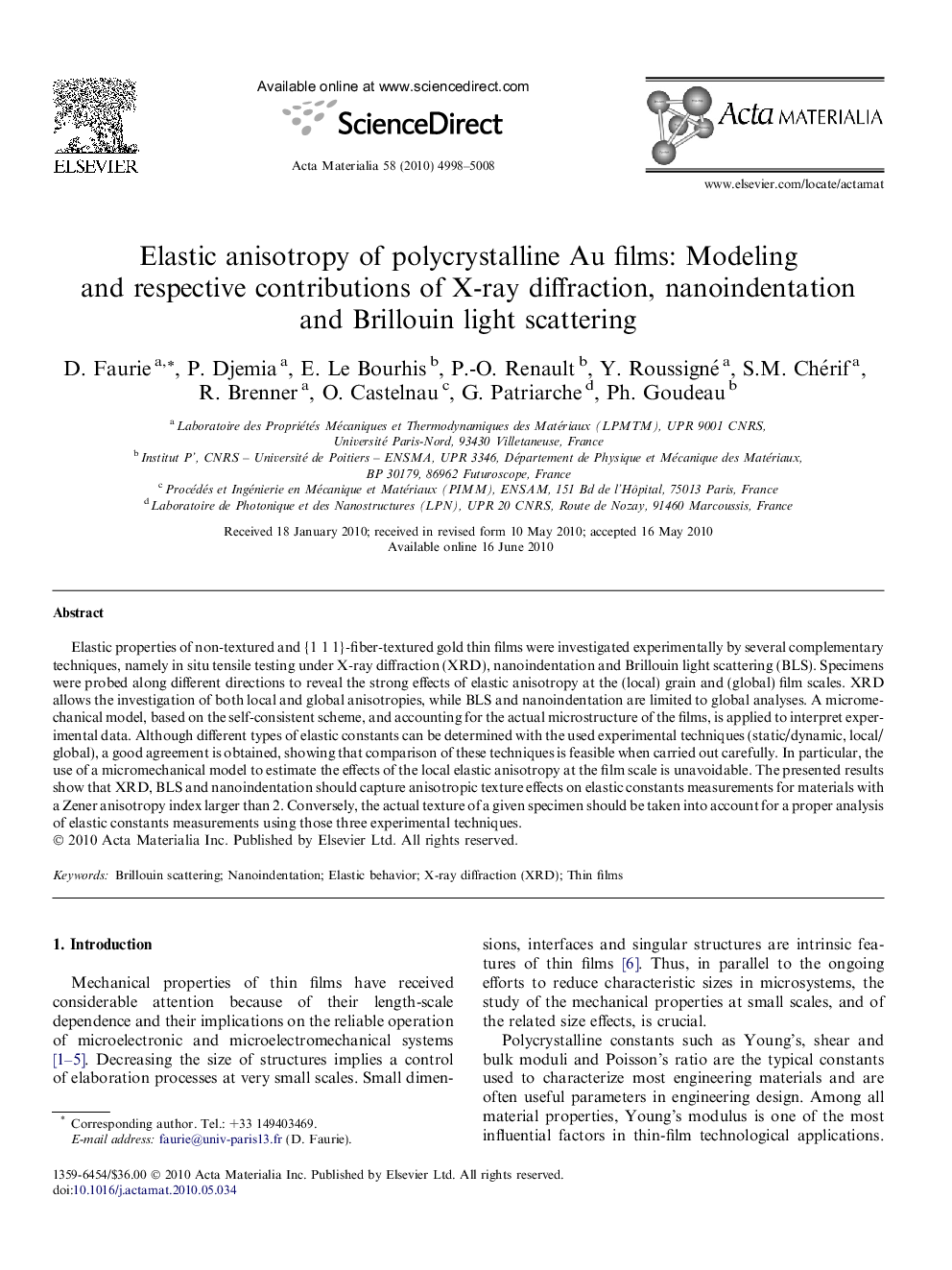| Article ID | Journal | Published Year | Pages | File Type |
|---|---|---|---|---|
| 1448389 | Acta Materialia | 2010 | 11 Pages |
Elastic properties of non-textured and {1 1 1}-fiber-textured gold thin films were investigated experimentally by several complementary techniques, namely in situ tensile testing under X-ray diffraction (XRD), nanoindentation and Brillouin light scattering (BLS). Specimens were probed along different directions to reveal the strong effects of elastic anisotropy at the (local) grain and (global) film scales. XRD allows the investigation of both local and global anisotropies, while BLS and nanoindentation are limited to global analyses. A micromechanical model, based on the self-consistent scheme, and accounting for the actual microstructure of the films, is applied to interpret experimental data. Although different types of elastic constants can be determined with the used experimental techniques (static/dynamic, local/global), a good agreement is obtained, showing that comparison of these techniques is feasible when carried out carefully. In particular, the use of a micromechanical model to estimate the effects of the local elastic anisotropy at the film scale is unavoidable. The presented results show that XRD, BLS and nanoindentation should capture anisotropic texture effects on elastic constants measurements for materials with a Zener anisotropy index larger than 2. Conversely, the actual texture of a given specimen should be taken into account for a proper analysis of elastic constants measurements using those three experimental techniques.
